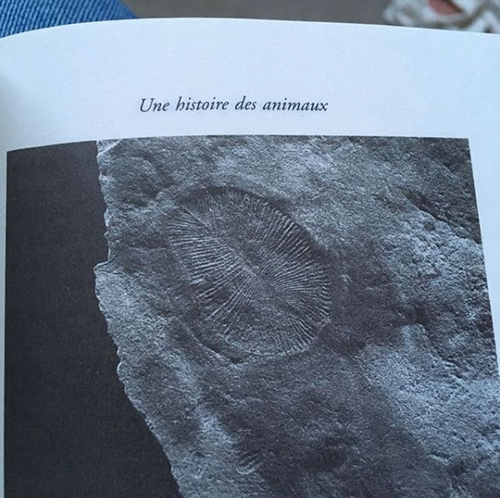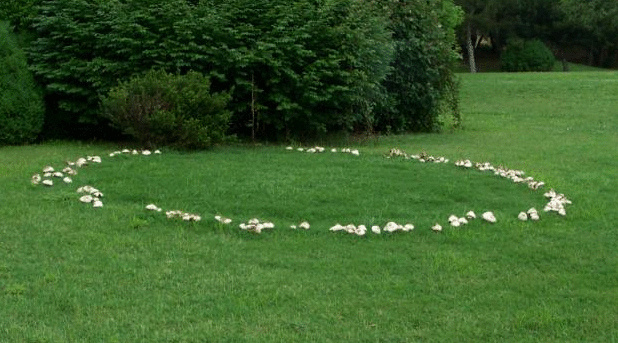BODIES OF MEMORY
Attempt to an introductionWe are looking for this materiality of memory. Shapeless substance, or rather always formed (in the process of being) and which we only apprehend through its manifestations -movements - gestures. Memory inhabits the exact bodies that produce and shape it, and those bodies are then animated/moved by memory. This starting point : necessity of a vehicle for memory, both intrinsically connected in a close relationship of intra-activation ☄︎. Memory taking shape as it is produced, strange substance circulating freely from bodies to bodies, from temporalities to temporalities (*des devenirs). Always and at once present, past, future ☄︎. Strangeness.
We then take a closer look at these bodies. What we call here bodies are also strange companions, with troubled frontiers. They are contenants, boxes, support. For now, we articulate three types : inert bodies (stone, tools), living bodies, and the hypothesis of a collective body. By looking at them so closely, new details, specificities comes to our attention. How these bodies, even those supposed to be inert, are in fact animated : stories, projections, humans activating objects and objects activating humans ; a whole diversity of interactions and coming together in a collective agencement. Suddenly all is movement, wild field of circulation, choreography. Each of those type of bodies are being moved by the others. Touching each other. Each body draws and holds his own temporality, and all temporalities cohabit : temporality of stone, temporality of humans, temporality of octopuses. It is a finding that we use as standing point to look at all this. Looking at all this from the point of view of those multiple and specific temporalities.

That is how we first became interested in inert objects. Looking at design, the making of forms, creation of contenants. We see that those also hold and show signs of memory. We are noticing leaks : those bodies are not hermetical and so rarely motionless. Their surfaces and limits are redefined with each contact, each projection, each holding, each story, each point of view. How to describe bodies without establishing their frontiers ? A need to explore. We also wonder about other boxes, organic boxes : a world of brains, neurons, etc. Unclassifiable unicellular organisms, octopuses, birds, humans. Letting oneself being surrounded by strangeness. A fauna.
Then back to movement, a fauna that dances. This idea that there is a correlation between time and movements - possibility of metaphors emerges. Possible dances, choreographies. Things that one knows and things that one learns and things that one teaches. Weirdness of all those gestures passed on through genes. Weirdness of instincts of care, seduction. And also gestures to say and tell and while telling producing memory (languages, history, stories...).
![]()
From gestures, thinking about contact. Attempts to transgressions. Attempts to blur the lines, the surfaces. Dancing with plants, establishing relationships. Meeting other species. Works of art, hybrids, which also move lines, cross frontiers. Fake archeological artefacts. Choosing to look at things this way. Transplants, plants, soils, trails, marks. Contacts always renewed, and wondering who touches who when it touches, hard to tell (see Vinciane Despret). Choosing to put oneself in the world that way. Those transgressions like breeches allowing knowledges and gestures to circulate freely between bodies, inside those multiple temporalities and geographies. We see a collective and composite memory taking shape. Emerges the idea a collective body of memory (a body of collective memory?)
Then back to movement, a fauna that dances. This idea that there is a correlation between time and movements - possibility of metaphors emerges. Possible dances, choreographies. Things that one knows and things that one learns and things that one teaches. Weirdness of all those gestures passed on through genes. Weirdness of instincts of care, seduction. And also gestures to say and tell and while telling producing memory (languages, history, stories...).


Here, memory is not a matter of remembering or past or else. No reminiscence. To help our research, we mean memory as a substance made of all the notions mentioned above, manifesting through bodies. Those notions are all the stuff transitting via genes, cells, care, innate behaviors, educations, knowledges, fictions, works of art... memory as a set of circulating knowledges. Something we might have in common - possible to put it in common. We feel it is critical to explore this hypothesis of a collective memory.
Noticing that the idea of transmission is not enough for us here, since all this substance seems to circultate through every body and in every direction, one line is not enough (Deleuze comes to help there once again). One line of occasional-one-time-only contacts is not working for us there, because we are talking about organizations of organisms that are like miracles (fairy rings), unicellular organisms knowing/learning without brain (blob), animals that know colors without eyes, trajectories, etc. Also human stories, fictions, art. Animals and humans putting together forms and shapes for their memory, their knowledge, and so emerge superpositions, hybridations, duplications, cohabitations, relationships....
Because we see that a “material memory” is circulating, in every direction and every kind of body, we need rhizomatic lines, always renewed touches and infinite possibilities for connections, re-lations. (with Didi Huberman about Nietzsche : reappearance of the past, repetition as difference, etc). Going back to this cycle of memory perpetually being made/produced/shaped by bodies it animates, all at the same time, nowhere and everywhere in between past, present and future.
Keeping memory as a tool to think contacts and circulation, as a magnifying lense helping us observe the agencements of bodies.
Memory helping us to think bodies and bodies helping us to think memory.
AC.
mémoire = des mouvements+ du temps
matérialité = toucher et/ou histoires